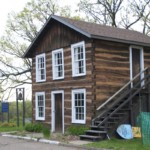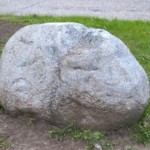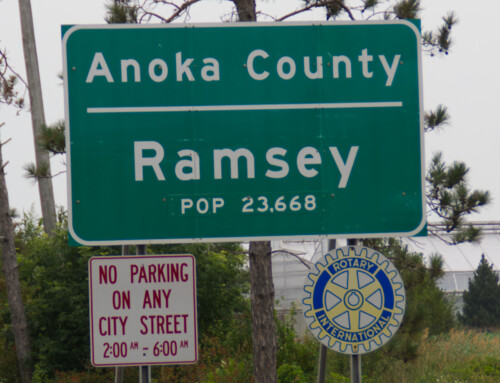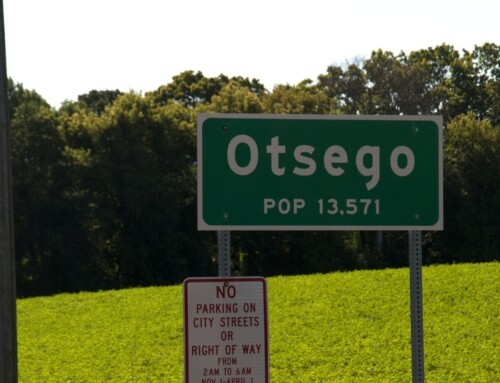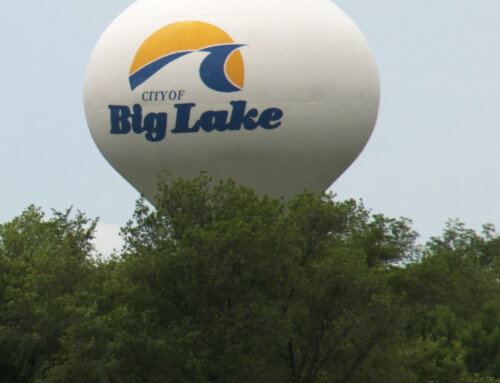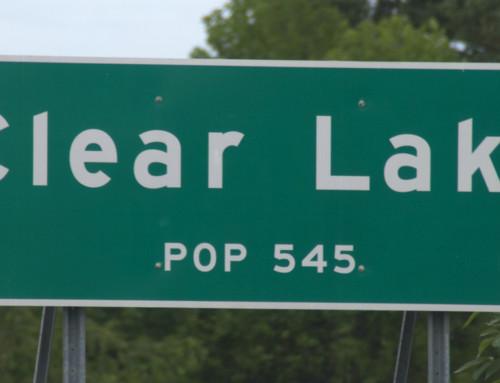Visitor Information
Got a question? Direct it to the folks at the Cottage Grove Area Chamber of Commerce (651.458.8334).
History
Newport began as two separate communities: Red Rock and Newport. Red Rock was the older of the two, tracing its origins to 1837. It was named after an unusually large granite boulder, a relic of the area’s glaciated past that was out of place among the area’s limestone formations. The native Dakota Indians came to view this rock (Eyah Shaw, or red rock) as the embodiment of the Great Spirit. Early settler Franklin Ford described the rock as “Square and stem it was an angry red in color and streaked with vermilion.”
The rock sat on the banks of the Mississippi and was visited by generations of Dakota who stopped to pay homage to the Great Spirit. Little Crow is reputed to have visited the rock before leading the Dakota into battle against the US in 1862. The rock was moved in 1918 and placed on a concrete foundation at the Methodist mission. Whether intentional or not, the rock, whose vermilion stripes had faced east, was turned to face west on its new foundation. To the Dakota, this shift of orientation symbolized the passing of the Great Spirit to next world.
The Methodist mission began with the 1837 arrival of Reverend Alfred Brunson, who established it initially at Kaposia (on the west bank of the Mississippi). His travel companion, John Holton, decided that the east side of the river was a more attractive place to start a farm, so he gets the credit for being the first official European settler of Newport.
In 1839 Benjamin Kavanaugh replaced Brunson at the Methodist mission. He grew concerned about hostilities between the Ojibwe and Dakota, so he too moved across the river where he built a 2-story log cabin that became the church, home, and school (the building has been preserved). When the post office was set up, the spot was called Kaposia Mission. Kavanaugh had a rough time of it; he lost a young daughter to diptheria, and his son drowned in the Mississippi. Kavanaugh closed the mission in 1844, and the post office was moved to John Ford’s trading post where it was given a new name, Red Rock, where by 1850, steamboats were making regular landings.
In 1869, Red Rock was chosen to host Methodist camp meetings. These summer events lasted several days and attracted thousands (the largest single day crowd was 20,000!) for fun, fellowship, and worship. They went strong for 20 years before declining in popularity.
About 15 years after Red Rock was established, a small community developed about a mile south that would eventually become the village of Newport. The tiny village got a boost in 1857 when E.M. Shelton opened a sawmill with his brothers. In 1889, the two villages merged and incorporated as the village of Newport. Newport attracted a couple of large companies: the Farmer’s Terminal Meat Packing Company opened in 1920, and the Fritz Candy Company opened in 1949.
Unlike many of its neighbors, Newport has remained a small city, with a population that has stayed stable below 4,000.
**Newport and the Twin Cities are covered in Road Tripping Along the Great River Road, Vol. 1. Click the link above for more. Disclosure: This website may be compensated for linking to other sites or for sales of products we link to.
Exploring the Area
The Newport United Methodist Church (1596 11th Ave.; 651.459.2747) has roots dating back to 1837. That famous red granite boulder, eyah shaw, is now on the church grounds. You can also see the 2-story log cabin built in 1839 by Methodist missionary B.T. Kavanaugh.
The Mississippi National River and Recreation (651.290.4160) runs for 72 miles through the Twin Cities. While the National Park Service owns very little land along the corridor, it has many programs to help connect people to the river. Visit their website for a complete listing of places to enjoy the river.
Where to Go Next
See the Twin Cities Overview for tips on festivals, getting around, and more.
Heading downriver? Check out St. Paul Park.
Heading upriver? Check out the St. Paul guide.
© Dean Klinkenberg, 2013,2017
Community-supported writing
If you like the content at the Mississippi Valley Traveler, please consider showing your support by making a one-time contribution or by subscribing through Patreon. Book sales don’t fully cover my costs, and I don’t have deep corporate pockets bankrolling my work. I’m a freelance writer bringing you stories about life along the Mississippi River. I need your help to keep this going. Every dollar you contribute makes it possible for me to continue sharing stories about America’s Greatest River!
